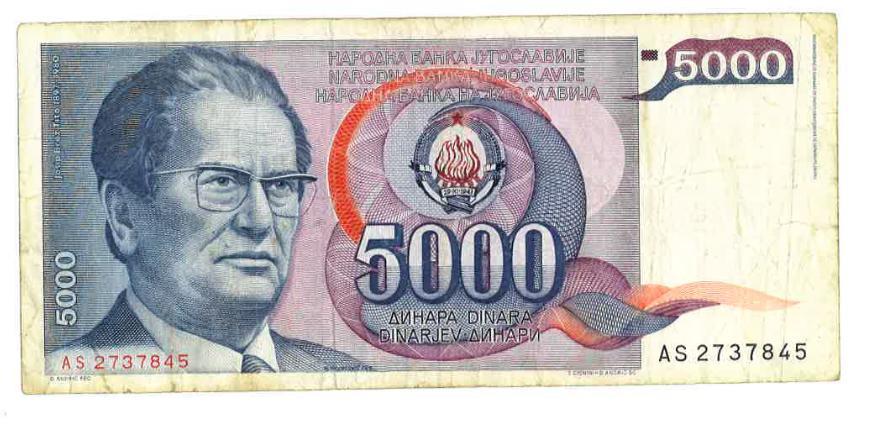
A banknote from 1985. This was the first Yugoslav dinar note with the image of Yugoslav leader Josip Broz Tito’s image on it – five years after his death. Some of the 5000 dinar notes from this year are worth more than others, because one series has the wrong year of death of Tito printed on them. Notes that say he died in 1930 instead of 1980 are now a collectors’ item, and worth about €50, today
This article originally appeared on VICE Serbia
When Yugoslavia fell apart, Serbia was the only of the former partner republics that kept the dinar as its currency. The united, semi-communist dream of Yugoslavia had crumbled, and the dinar had crumbled with it.
Videos by VICE
Because of years of bad economic policy and later international sanctions imposed on Serbia for its role in the Balkan Wars, Serbia experienced some of the worst hyperinflation in history in the late 80s and early 90s. There was hardly anything produced in the country and with sanctions on import and export, prices went crazy. The Central Bank in Yugoslavia started pumping out new paper money without backing its value or controlling it in any way. More and more zeroes were added to the new notes.
So Serbians were billionaires for a while – but very poor ones at that. There was a war raging at just about hundred miles from the capital of Belgrade, and the people who still had jobs or made money on the black market would wake up in the morning with enough money to buy a loaf of bread and a bottle of milk. But by the afternoon, that money would be worth even less. A pack of cigarettes had one price in the morning but in the evening, you would pay the same price for a single cigarette.
My mother used to work as a banker and she saved some of the banknotes from the time. Today, they seem like toy money from a very twisted edition of Monopoly.
1988

In 1988 – a few years before hyperinflation reached its peak – the first Yugoslavian banknotes with more than three zeroes were printed. The six republic members of Yugoslavia were already at odds at the time, so the Central Bank decided that for a while, the notes could depict only random faces of people who had never actually existed. Specific national heroes could offend the different ethnic groups who were still living and working together. This girl and the one below have both sprung from the illustrator’s imagination.
1990

Months before the start of the wars in 1991, the Yugoslav financial authority tried to prevent a financial crisis by devaluing the national currency and erasing a few zeroes so 10,000 old dinars were exchanged for 1 new one. It didn’t help much – prices kept going up at a rate that was hard to keep up with.
1993
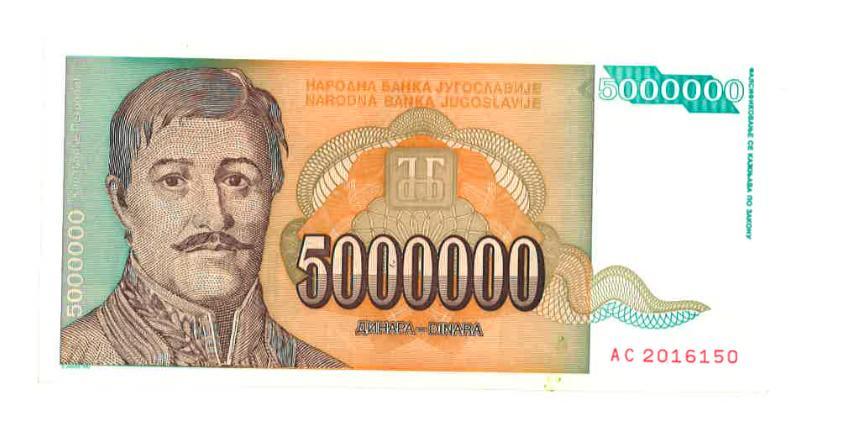
A 5,000,000 dinar note depicting Serbian national hero Karadjordje, who led his people in their fight against the Ottoman occupation. By now, Yugoslavia was breaking up and natonal(istic) characters were welcomed back on bank notes
By December 1993, prices doubled every few days. But while there were several more currency exchanges – like in 1993, when 1 new dinar was exchanged for 1,000,000 old ones – inflation was so unstoppable that the Central Bank had to keep adding zeroes to the dinar’s banknotes.

A 5,000,000 dinar note depicting Serbian scientist Nikola Tesla

A 50,000,000 dinar note depicting scientist and NASA co-founder Mihajlo Pupin

A 50,000,000 dinar note depicting a random girl again. Rumour at the time was that the Central Bank still had this image lying around and decided to use it, because it thought that with inflation being so high the note wouldn’t be in circulation for long anyway
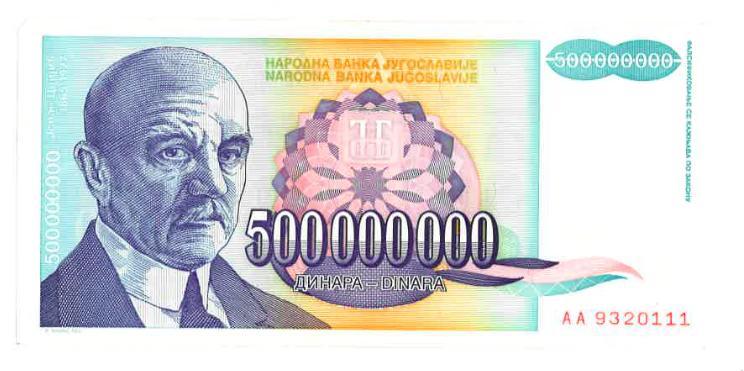
A 500,000,000 dinar note depicting Serbian geographer, ethnologist and sociologist Jovan Cvijić
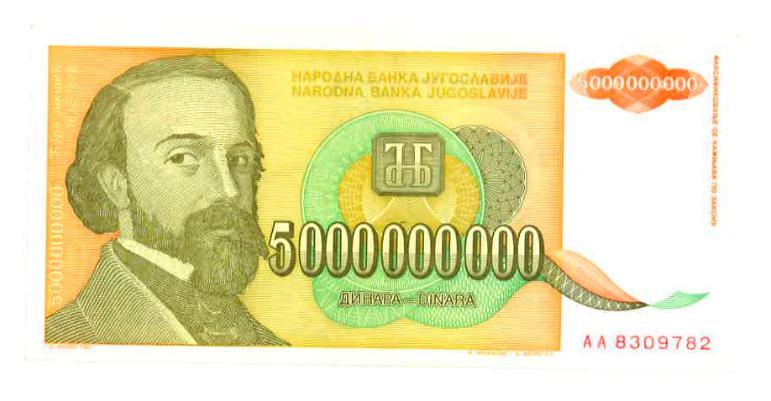
A 5,000,000,000 dinar note depicting Serbian poet and painter Djura Jaksic

A 50,000,000,000 dinar note depicting Serbian warrior and autocratic ruler Milos Obrenovic
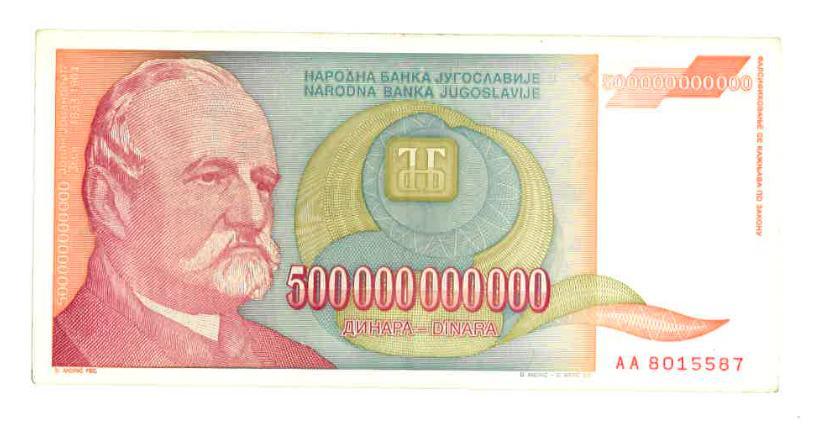
A 500,000,000,000 dinar note depicting Serbian poet, satirist and physician Jovan Jovanovic Zmaj. The 500 billion note was the highest denomination during Serbia’s hyperinflation
1994
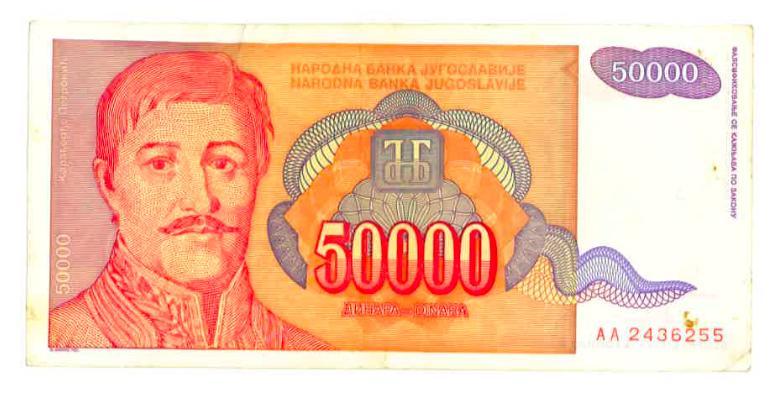
A 50,000 dinar note depicting Karadjordje again
When inflation in Yugoslavia reached its peak in January 1994 at 313 million percent, a series of strict economic measures brought it to its end. Finally, it made sense again to carry dinar banknotes in Serbia for longer than a day.
The economy hadn’t recovered as such – but at least there weren’t as many zeroes looking at us from our banknotes, silently mocking us.
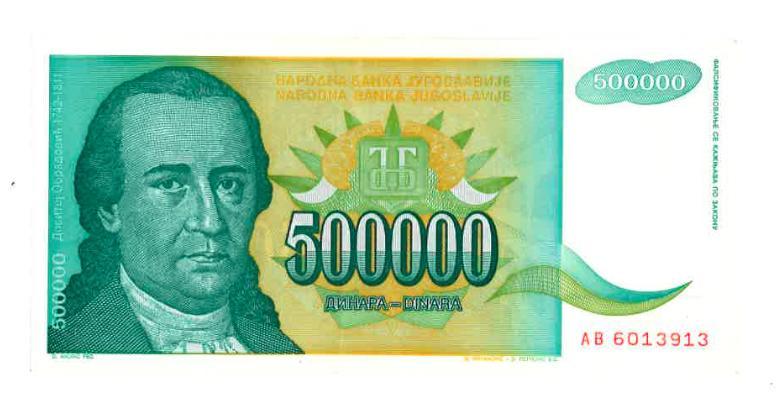
A 500,000 dinar note depicting writer, philosopher and linguist Dositej Obradovic
More on VICE
How to Get Rich Without Doing Any Work
More
From VICE
-

Lettuce (Credit: Sam Silkworth) -

Screenshot: Pokemon Go -

Clara Balzary -

Screenshot: NetEase
